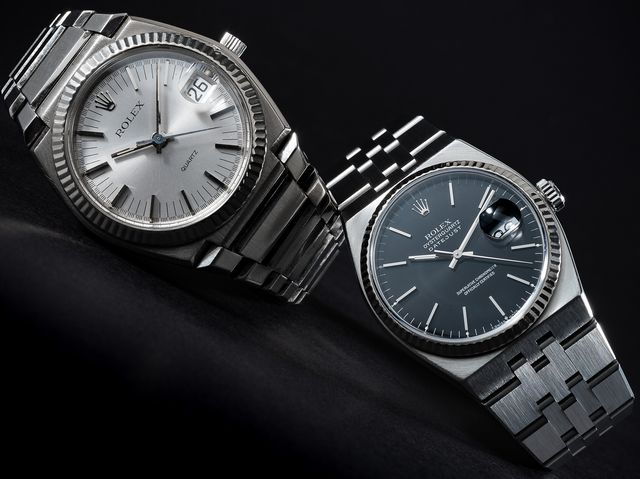
Christopher Beccan
The hidden link between Rolex and the Royal Oak
Collectors and designers alike idolise Gerald Genta’s Royal Oak, but its origin story has always been murky, involving tales of diving helmets and ancient portholes. Recently, however, James Dowling uncovered an unlikely, quartz-powered parentage…
Two of my favourite watches are the original Royal Oak from Audemars Piguet, which I love for its slimness and lack of a seconds hand (it frees me from the tyranny of the BBC “pips”) and the Rolex Oysterquartz, which I love for the ruggedness of its bracelet design and its mouthwatering accuracy.
And, like many, I have often looked at the two of them as almost “brothers from a different mother” and wondered if there was a connection. I recently discovered that there was, and it was even closer than I had thought.
The Oysterquartz (170xx and 190xx) models are some of the least well-known Rolex watches, so it is understandable that most people don’t even know that there was an earlier Rolex quartz wristwatch, the reference 5100.
In order to discuss this, we have to go back 40+ years, to the start of the quartz wristwatch era. The first quartz clocks were the size of a small room; by the 1950s they were the size of an American two-door refrigerator, and the world was astounded when Seiko produced the world’s first portable quartz timepiece, the QC-951 in 1963. It was the size of a Marine Chronometer and was powered by normal commercially available batteries.
Later that year Seiko entered it in the Swiss chronometer competition. It came 10th, and the Swiss then realised that the race for a quartz wristwatch was now on. Although several individual firms had done some research in quartz, Patek Philippe being the most prominent, it was decided that a collaborative effort would have the best chance and so the CEH (Centre Electronique Horloger/Electronic Watch Centre) was founded in Neuchatel.
The various firms involved in the project sent their best brains to work on the quest, but the problem was that there was no agreement on how the new electronic watch should work: should it be a purely electronic version of a conventional watch (like the Hamilton or Lip watches); should it use a resonant source (like the Bulova Accutron’s tuning fork), or should it be a quartz watch?
While the various factions at CEH fought it out in the boardroom, the backroom boffins decided to make a working prototype using quartz, just to prove it could be done. This was the Beta 1, shown in July 1967. It was definitively the world’s first quartz wristwatch, but instead of revising the design for mass production, the folks at CEH continued to squabble and it was another two years before they were ready with their first production movement, the Beta 21, which (in fact) had almost nothing in common with the Beta 1.
The Beta 21 was a large movement, measuring 30.9mm x 26.5mm, which presented the watchmaking partners with a problem. Absolutely none of them had a case which would take this movement.
At this point, it is important to understand how Swiss watch firms worked in the 1950s & ‘60s; they made only movements; cases, dials, bracelets & hands were produced by a wide range of specialist firms. And so the manufacturers called up their case suppliers, gave them the specifications of the new movement and requested case designs from them. Remember too that up until this point the equation for pricing Swiss watches was: the more accurate it is, the more it costs.
So, as these would likely be the most accurate watches sold by the respective brands, and it was only correct that they should be made in gold – these were going to be very expensive watches. Also, since they were using advanced technology, the CEH wanted the watches to look rather different from the norm. The casemakers took this to heart and produced some of the most extraordinary cases then seen.
The most massive of all the Beta 21 watches was the Rolex version, known within Rolex as the reference 5100 and to collectors as “The Texan”. It bore zero resemblance to any current Rolex, having essentially a tonneau shaped case surmounted by a round bezel & dial. What was most unusual for Rolex was that the tonneau section was very angular.
Rolex had always made their watches with almost organic curves, which blended into one another; not here – the 5100 had mostly flat surfaces. And, unlike any previous Rolex, the massive three-link bracelet, which drew no inspiration from any existing Rolex bracelet, was permanently attached to the case. Of course, it could be removed for servicing the watch, but there was no way that an alternative strap or bracelet could be fitted.
Rolex produced exactly 1,000 of these watches in just over two years, and most unusually for Rolex, they individually numbered them from 001 to 1,000. But that wasn’t the end of the quartz saga for Rolex; five years after the demise of the Texan, the Oysterquartz was born and it was everything the Texan wasn’t.
It had an in-house movement, newly developed by Rolex; it was an Oyster with a screw down back and crown, and it was available in every metal and combination. But its design drew inspiration from the Texan, with even more pronounced flat surfaces and sharp angles, and it retained an unusual non-detachable bracelet.
Two years ago, I was interviewing a gentleman who had been a close, long-term colleague of Gerald Genta’s, and we got to talking about all the great watches Genta had designed. Out of almost nowhere my interviewee said to me: “You are a big Rolex fan, I know; and do you know what Genta’s only regret was?” I shook my head and he responded: “He never got the chance to design the DateJust. He thought it was the perfect watch, and would have loved to have had a chance to work on it.”
I nodded and agreed, wondering inside my head what a Genta-designed DateJust would look like, at which point he dropped the bombshell. “He only ever designed one watch for Rolex,” he sayd. “It was their first quartz watch, many years ago.”
Suddenly it all fell into place: the Oysterquartz was designed by Rolex, no doubt about it, but its design was heavily influenced by the design of the Texan, which we now know was designed by Genta. The Texan was launched in March 1970, meaning it was designed in late 1969; the Royal Oak came just two years later.
So, was the design of the Royal Oak influenced by the Rolex Texan? We can’t say it with absolute certainty, but the fact that they both came from the mind of the most creative watch designer of the 20th century, and given the closeness in timing, it would be extraordinary if it wasn’t.
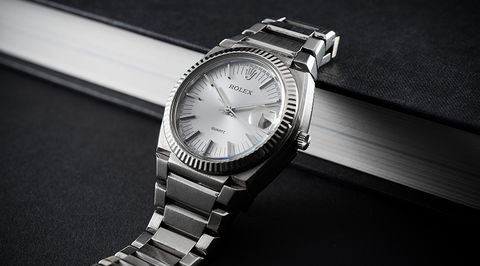
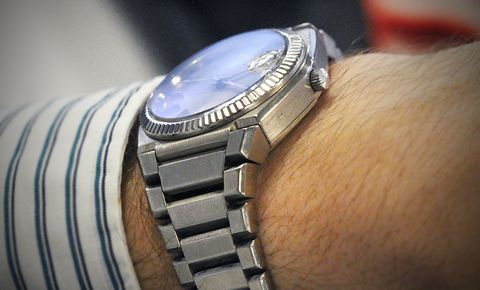
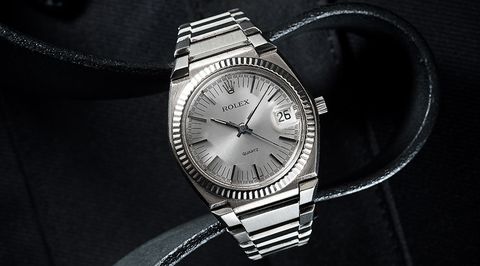
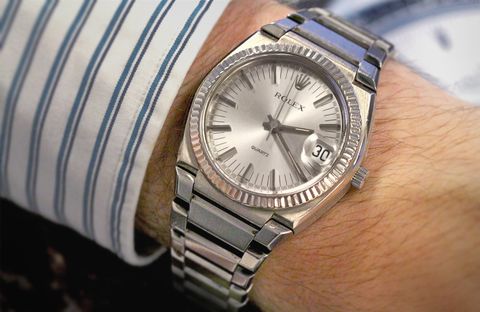

No comments:
Post a Comment